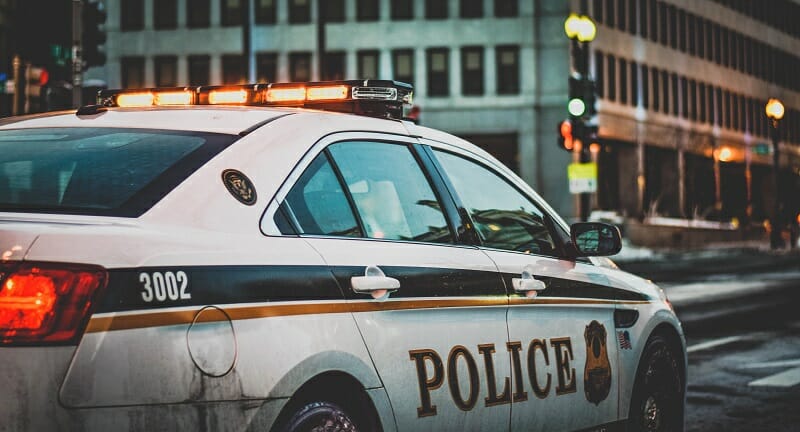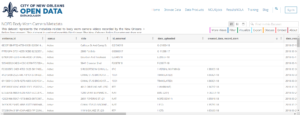
New day. New challenge.
Here’s Andy’s blog post.
Today we are looking at a dataset on NOPD and the use of body-worn cameras.
Since I want to finish writing earlier today and I have a call this afternoon, I’ve decided to publish the draft now at 11 am and update the post along the way.
NOPD Body-Worn Cameras: A look at the dataset
Today’s challenge is based on NOPD Body Worn Camera Metadata. Here’s a snapshot.
“This dataset represents the metadata related to body worn camera videos recorded by the New Orleans Police Department. This dataset is updated monthly.”
It also goes on detailing a few terms and conditions:
“Disclaimer: The New Orleans Police Department does not guarantee (either expressed or implied) the accuracy, completeness, timeliness, or correct sequencing of the information. The New Orleans Police Department will not be responsible for any error or omission, or for the use of, or the results obtained from the use of this information. All data visualizations on maps should be considered approximate and attempts to derive specific addresses are strictly prohibited. The user specifically acknowledges that the New Orleans Police Department is not responsible for any defamatory, offensive, misleading, or illegal conduct of other users, links, or third parties and that the risk of injury from the foregoing rests entirely with the user. Any use of the information for commercial purposes is strictly prohibited. The unauthorized use of the words “New Orleans Police Department,” “NOPD,” or any colorable imitation of these words or the unauthorized use of the New Orleans Police Department logo is unlawful. This web page does not, in any way, authorize such use.”
Therefore, we are not allowed to drill down to the exact streets and address, whenever they are available.
Tom immediately shared a PDF with NOPD body camera usage policy and Louise found out that body camera usage is on the rise in New Orleans.
Why do the police use body-worn cameras?
The report clarifies that:
“Use of this technology provides for video/audio documentation of a police officer’s enforcement and investigative activities from the perspective of the officer’s person. Benefits to using this equipment can be expected to promote officer safety, result in greater transparency,
more effective prosecution, and improved protection against false allegations of excessive use of force, misconduct or racial profiling.”
Let’s start sketching!
After some training courses and workshops we organized at Ashoka with young social innovators, I have completely embraced this process. I now draw much more often in the brainstorming phase.
And here at the Data School, sketching is back, too. It’s the core of my work process.
I have a long Google doc about Caroline Beavon‘s lesson on Design Thinking and Data Viz.
I will publish a post on it sooner or later.
I have to say that I’ve found it hard to apply it here at the Data School, given the time constrictions and the fact that we have to spend a lot of the time together in the classroom. Not so much time and space to get some perspective on what we have to do.
What I love is looking at a dataset and then leaving it on the side for a while.
If I take a walk or can get back to it the next day, I usually wake up with loads of ideas popping up in my head.
Sketching is key.
Andy asked us to share with the others our raw hand-made work before being carried away with Tableau and the actual viz-making process.
So, here are my first (very very rough) thoughts on paper. I don’t know yet if they make sense at all.

*******
Credits:
police station: Photo by Bruno Martins on Unsplash
police car: Photo by Matt Popovich on Unsplash

